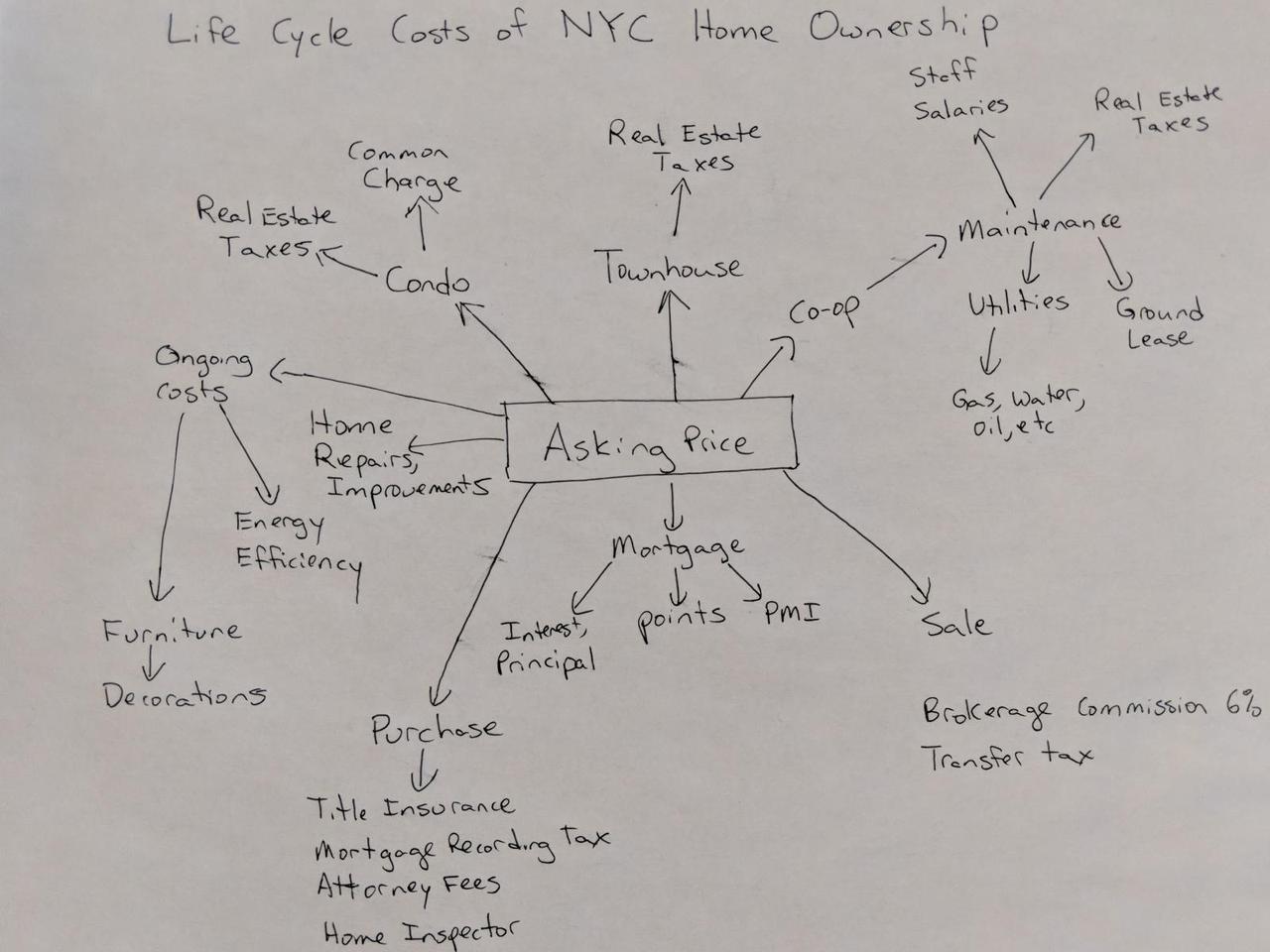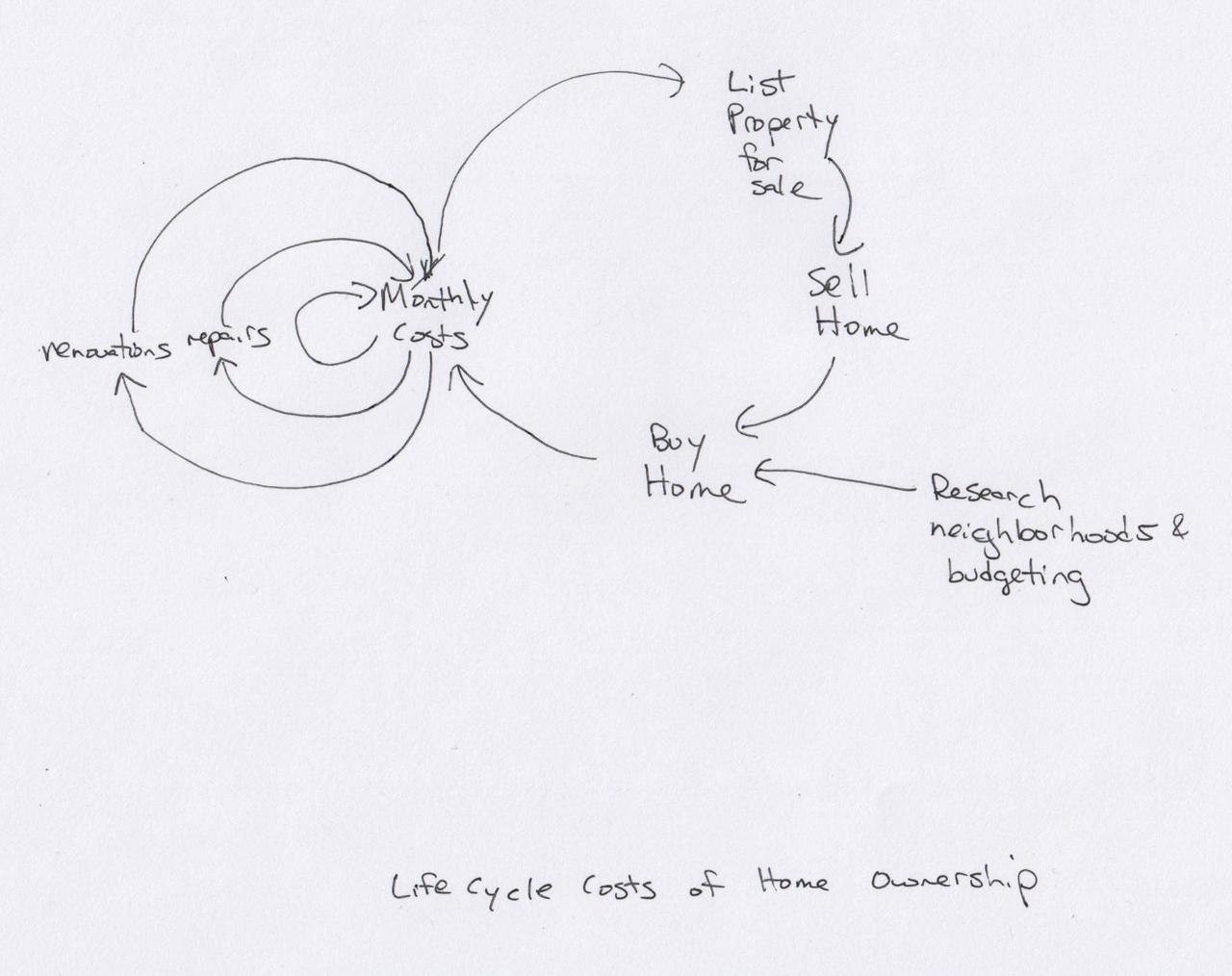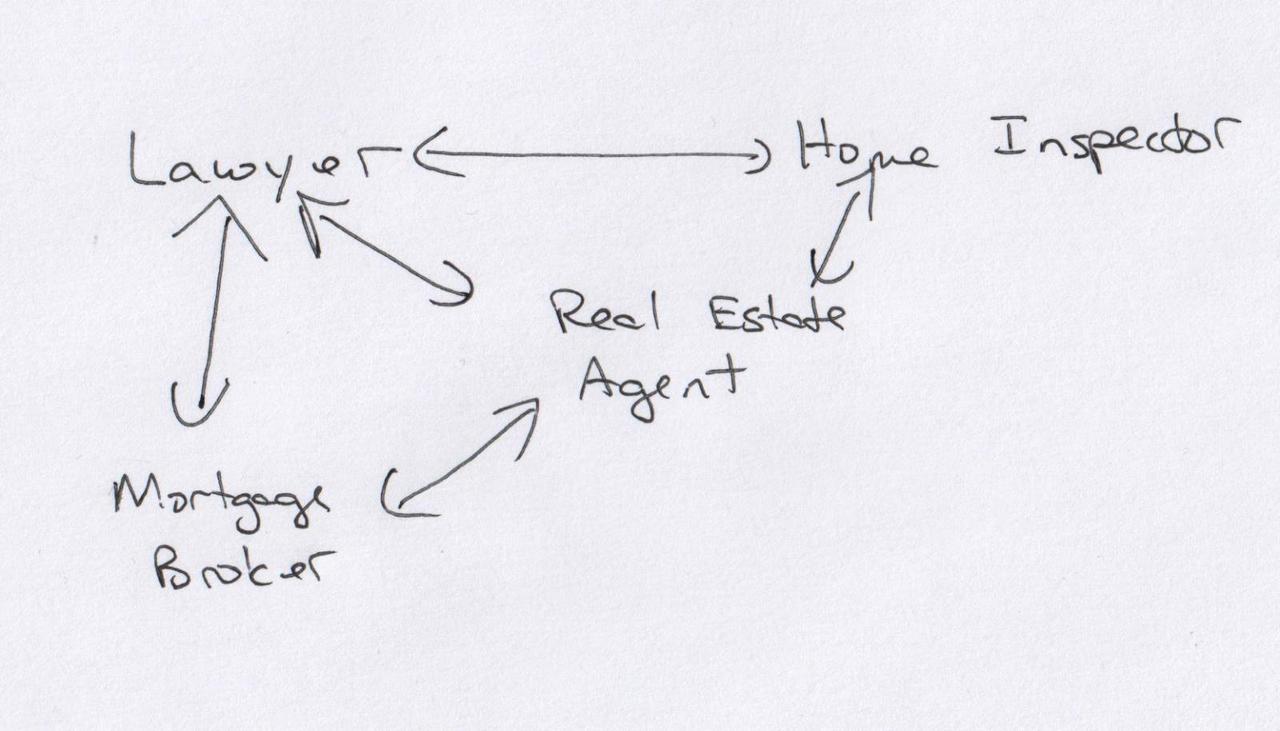Taxonomy and Field Guide Entries
Continuing my research on the "Life Cycle Costs of NYC Home Ownership," my next step is to create a taxonomy and draft field guide entries.
Before exploring the details of each I wanted to first discuss some higher level concepts to get them clear in my mind. First, in last week's post I was concerned that this project would become tedious and boring as I presented real estate financing details like ground leases and the mortgage tax. Rather than go in that direction I would rather bring these concepts to people's attention but then direct people to other sources for the detailed information.
Since this will be a printed field guide I can't include URLs but I can raise questions and concepts readers should be knowledgeable about and identify the people or sources that could provide more information. For example, a reader can easily Google "nyc mortgage tax" and find out necessary details relevant to their situation but readers won't do that if nobody tells them that a "mortgage tax" is a thing that is relevant to this process.
This approach can provide more value to readers than a field guide that tries (probably unsuccessfully) to explain every life cycle cost detail that potential homeowners are supposed to know. Such a guide could give a false sense of confidence and mislead people in some way. I don't want to do that. A better approach is to prime people with the right questions and motivate them to get answers. I don't want to intimidate anyone or overwhelm anyone with questions though. The right balance is to raise questions and show that help and support are both available to overcome the challenges.
Taxonomy: Mapping Information
I need to organize the information to be presented to the user in a hierarchy of some kind. One approach is to do something similar to the mind map I created last week:

I could create a stylized apartment listing for the center and add branches extending from the center for the different components associated with buying an apartment. I would also want to prune and organize those branches a bit. Kind of like this:

That's not the only relevant diagram though. My topic is "Life Cycle Costs" so perhaps I could illustrate an actual cycle of some kind, showing the flow from one ownership step to another.

I can also map out the human specialists a buyer would have to interact with, defining their roles and showing their relationships to each other.

In my view the mind map is the most critical and should be central to the field guide. The other two diagrams are more auxiliary but might help potential buyers understand the process.
Field Guild Entries
Each of the above maps should have associated entries to provide more information.
For the mind map I would want to use short entries to keep the diagram from becoming too cluttered. For example:
Ground Lease: Some coop buildings do not own the land they sit on and must pay a lease to the land owner. That lease will expire and be renewed one day, probably for a higher price that will impact owner monthly maintenance fees.
Brokerage Commission: 6% fee paid by the seller split between the buyer's and seller's real estate agents
PMI (Private Mortgage Insurance): Monthly payment required of borrowers who finance mortgages with less than 20% of a home's value
Home Inspector: Before buying a home you need an expert to evaluate it for problems that you will not be able to identify yourself. Home inspectors can also provide information that you can use to help adjust the sale price in your favor.
Mortgage (Recording) Tax: New York State and City taxes on mortgages
Transfer Tax: New York State tax on large property transfers
Ongoing Costs: Costs for repair and upkeep of a home. Expenses like buying new appliances or repairing plumbing issues
It might be interesting to color-code the above terms to link them to the human specialists buyers should seek out for more information.
In the cycle diagram I would need to define the steps and what is supposed to happen in each. Are these self-explanatory from the labels themselves? No sense cluttering the field guide with redundant words. Some should be illuminated here or elsewhere in the field guide.
Monthly Costs: Monthly or quarterly expenses that are known and can be planned in advance, such as maintenance fees and real estate tax
Renovations: Capital improvements to home, such as a bathroom renovation a fresh coat of paint
Repairs: Unexpected and unplanned expenses, such as replacing a broken dish washer or fixing a damaged wall
And finally, the human specialists.
Lawyer: person who represents you in the financial transaction and is responsible for making sure the legal documents are complete
Real Estate Agent: person who facilitates connections between potential buyers and sellers
Mortgage Broker: person who will help facilitate the mortgage borrowing process with the bank, making sure you understand the loan terms and managing the paperwork filing and signing
A color or symbol coding system of some kind can link the topics in the mind map to the human specialists so readers know who to talk to about each.
These entries could probably be improved somewhat. How about tips for selecting a good lawyer, mortgage broker, and real estate agent? I need to do more research to get more information on this.
Comments